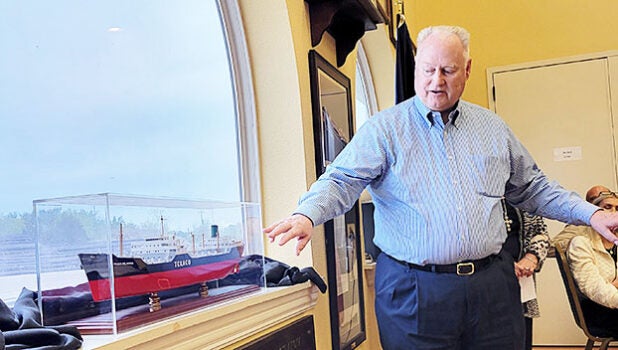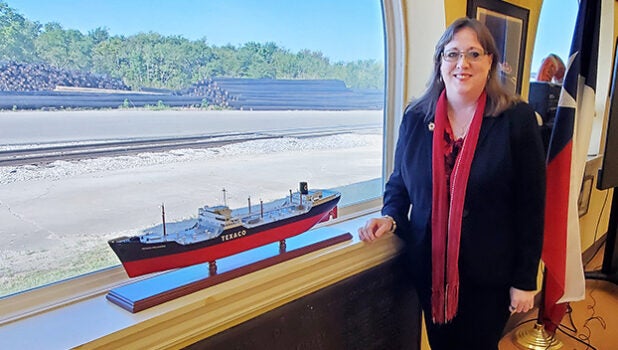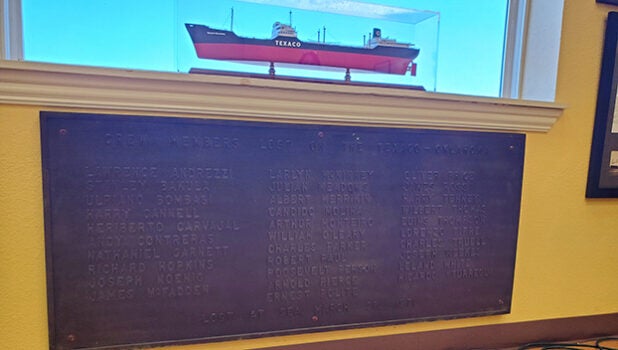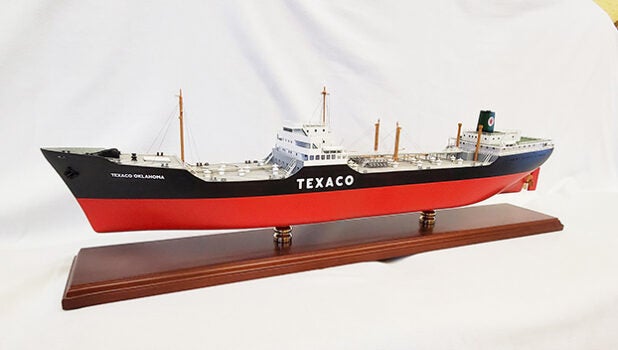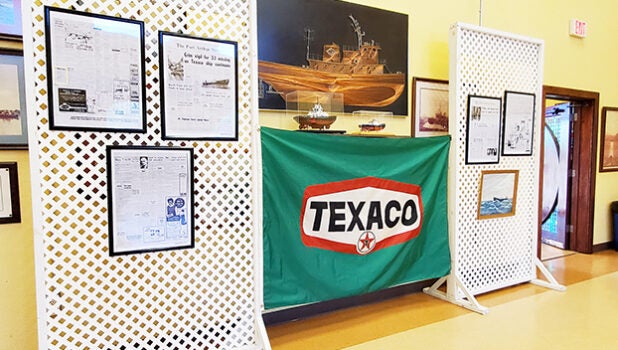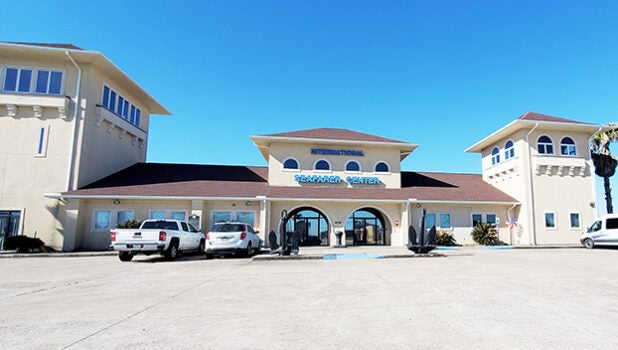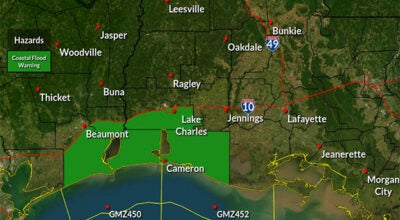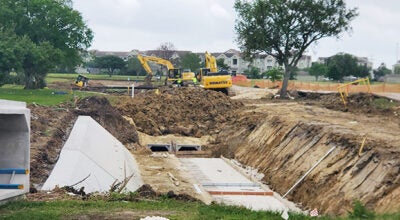Ship model honors lives lost in Texaco Oklahoma tragedy; many from Port Arthur impacted
Published 12:20 am Saturday, March 30, 2024
|
Getting your Trinity Audio player ready...
|
Standing on the stern of the Texaco Oklahoma as the ship was slowly sinking into the ocean there was calmness among the crew and officers.
The individuals were talking about what they were going to do once they got back home. Most of that conversation was about reuniting with loved ones when they got back home.
Mike Banda, one of the few remaining survivors of the March 1971 tragedy, said he makes it a point to tell this to family members who lost a loved one in the sinking of the ship.
A model of the ship was recently unveiled at the Port Arthur International Seafarers’ Center, and Bandy had a hand in letting the model makers know what the ship looked like, as there are no surviving photos of the vessel.
The Texaco Oklahoma homeport was Port Arthur, and a majority of those aboard were from Port Arthur and neighboring cities.
Of the 44 onboard, 31 men perished; Bandy was one of the 13 survivors and at 21, was one of the youngest.
The ship
The Texaco Oklahoma was big — it was actually the largest in its fleet at the time and was two-and-a-half football fields in length.
The ship was on its way from Port Arthur to Boston and was approximately 120 miles from Cape Hatteras when it split in two due to hull failure.
This wasn’t a fast sinking such, Bandy said, so the accounts of the survivors of the Texaco Oklahoma may seem conflicting.
The reason is the people on board were in different areas of the ship when it occurred. Bandy was in bed.
“The (Texaco) Oklahoma tragedy kind of unfolded in slow motion. We broke in half at about 3 a.m. and we did not abandon the stern for 24 to 36 hours,” Bandy said. “Then we had another series of events while we were 24 hours in the water.”
Unlike a refinery explosion, where the aftermath is relatively apparent in minutes or hours, the Texaco Oklahoma went on for two days, he said.
Bandy has many memories of the fateful event, saying many people didn’t think they would perish this way. And even after it was apparent the ship would go down, they had another six to eight hours before they abandoned ship.
“There was a lot of hope among the crew and officers,” he said.
Bandy recalled hurricane force winds and the deck slippery from oil as the crew went for a lifeboat at some point. But first he needed to see if the plug as in the lifeboat, so he made his way there, found and screwed in the plug, then popped his head up to see everyone but one man gone.
“What was closing in on us was the bow of the ship,” he said of the split-in-two vessel. “When I could finally see it, it was 50 to 60 feet out and closing fast.”
He realized the reason he didn’t see the other crewmates was because they had seen the bow coming and scatted.
Bandy and an engineer went down to the engine room, where they got the engines and boiler going and steered the ship so it was able to back away from the oncoming section.
History
According to historical records from the National Transportation Safety Board, the Texaco Oklahoma was traveling at a very slow speed in a severe storm when the incident occurred.
She was fully loaded with a cargo of black oil. The ship split in the vicinity of No. 5 tanks and submerged all of the crew asleep in the forward deckhouse.
The forward section then reversed direction and drifted down onto the stern section, destroying the starboard lifeboat before the stern section was backed safely away.
None of the 13 crewmembers in the forward section survived.
The crewmembers in the stern section attempted to attract passing ships by firing flares, blinking white and red lights and sounding the ship’s whistle. One ship responded to the light signals but no distress signals were identified and the responding ship departed.
The Seafarers’ Center
Inside the Seafarers’ Center at 401 Houston Avenue in Port Arthur, is a plaque that was once on the Martin Luther King Jr. Bridge (formerly the Gulfgate Bridge) connecting the city to Pleasure Island. The plaque has the names of the individuals who died in the sinking of the ship.
The specially commissioned model of the Texaco Oklahoma can be seen nearby.


